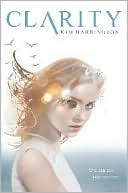Recently I read Wild Mind, Living the Writer's Life, by Natalie Goldberg. It's a book you'll need to read more than once. Possibly use as a reference to remind yourself to take ten minutes and free write.
MS Goldberg explains steps to become a fluid and bold writer, which she refers to as writing practice. Unlike journal writing which is personal, writing practice frees your mind and pulls out your passions silencing your monkey brain, (inner critic).
When first beginning to free write you may be stumped where to start. Her suggestions are to begin with I remember, or I'm thinking of, or I want, I don't want, I feel or don't feel. There are many ways to begin. Soon words begin toppling from your mind onto paper (or computer screen) like someone pushed that first domino.
There are a few rules:
1. Keep your pen moving. (in the case of computer your fingers.) However, I find it freeing to write with pen and paper.
2. Don't hold back anything. Whatever pops into that writerly brain get it down.
3. Be specific. Name the car, fruit or bird.
4. Don't think. OH MY GOSH I LOVE NOT THINKING.
5. No punctuation. (however, I have a hard time with this one.)
6. You are free to write garbage. (YAY!)
7. Go for it.
There is much more guidance in her book. You can purchase it here:
B & N Amazon
Now set your timer for ten minutes. GO!








